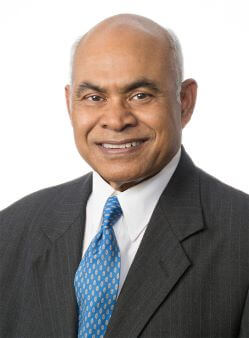“The public urges doctors to give empathetic medical care, but the system is encouraging us to be impersonal.”
 So reads a January 1986 New York Times opinion piece, stating the obvious for author Fazlur Rahman, MD.
So reads a January 1986 New York Times opinion piece, stating the obvious for author Fazlur Rahman, MD.
The retired San Angelo oncologist says that adage still rings true almost 40 years since he penned that first piece for publication in a major U.S. news outlet. Since then, Dr. Rahman has been educating the public and fellow physicians through columns he has written for Newsweek, Wall Street Journal, The Guardian, and other publications.
“We need MRIs, CT scans, and now AI. If we just rely on technology without understanding bedside medicine, we’ll think a patient is a machine to be fixed,” the 51-year member of the Texas Medical Association told Texas Medicine Today. “Bedside medicine and the empathy that it brings is still very important for care. Science is absolutely important for medicine, but science cannot feel your anguish.”
In his more than half-century as a TMA member, Dr. Rahman has served as a member of TMA’s Committee on Cancer and helped guide Texas Medicine content for 10 years on the former TMA Editorial Committee.
He continues to be a member because he says unlike some professional associations he’s been a part of as a physician, TMA “doesn’t ignore rural patients and rural practitioners.”
“TMA has been very attentive to the county societies. Rather than just catering to the [physicians in the big cities], the county societies are important too,” he said. “A person from TMA comes to every [Concho Valley County Medical Society] meeting. That matters to me.”
Originally from Bangladesh, Dr. Rahman and his wife, Jahanara, settled in San Angelo in 1975 after starting his medical career in Houston. He chose to head west to “to be a pioneer” after encouragement to make a difference from one of his mentors.
Oncology had just been formally established as a subspecialty of internal medicine, and specialists were hard to come by in the city of, at that time, 60,000 residents, Dr. Rahman says. Initially, he says life on the “Western front” was difficult.
“All my idealism and my view that I would make a difference – it disappeared very quickly,” Dr. Rahman said. “In big cities, you’re surrounded by your mentors and other colleagues. I felt the isolation.”
But soon that isolation waned as Dr. Rahman’s life “connected” with his patients, and “their lives connected with me,” especially ones needing end-of-life care. When he arrived in San Angelo there were no end-of-life care facilities outside of hospitals for his patients. In 1985, he and colleagues partnered with the Junior League of San Angelo to found Hospice San Angelo.
“It was a godsend to my patients because they suffered,” he said. “There was no place [for terminal cancer patients] to go. They couldn’t go home, and home health care is not always comfortable.”
The short opinion pieces that Dr. Rahman put together over the years prepared him for a broader writing assignment: book author. As a published scribe of two books since his retirement in 2011, his focus is to continue to spread the gospel on how physicians “can help their patients with that connection.”
“A patient’s healing begins with your reassuring presence and your empathy.”